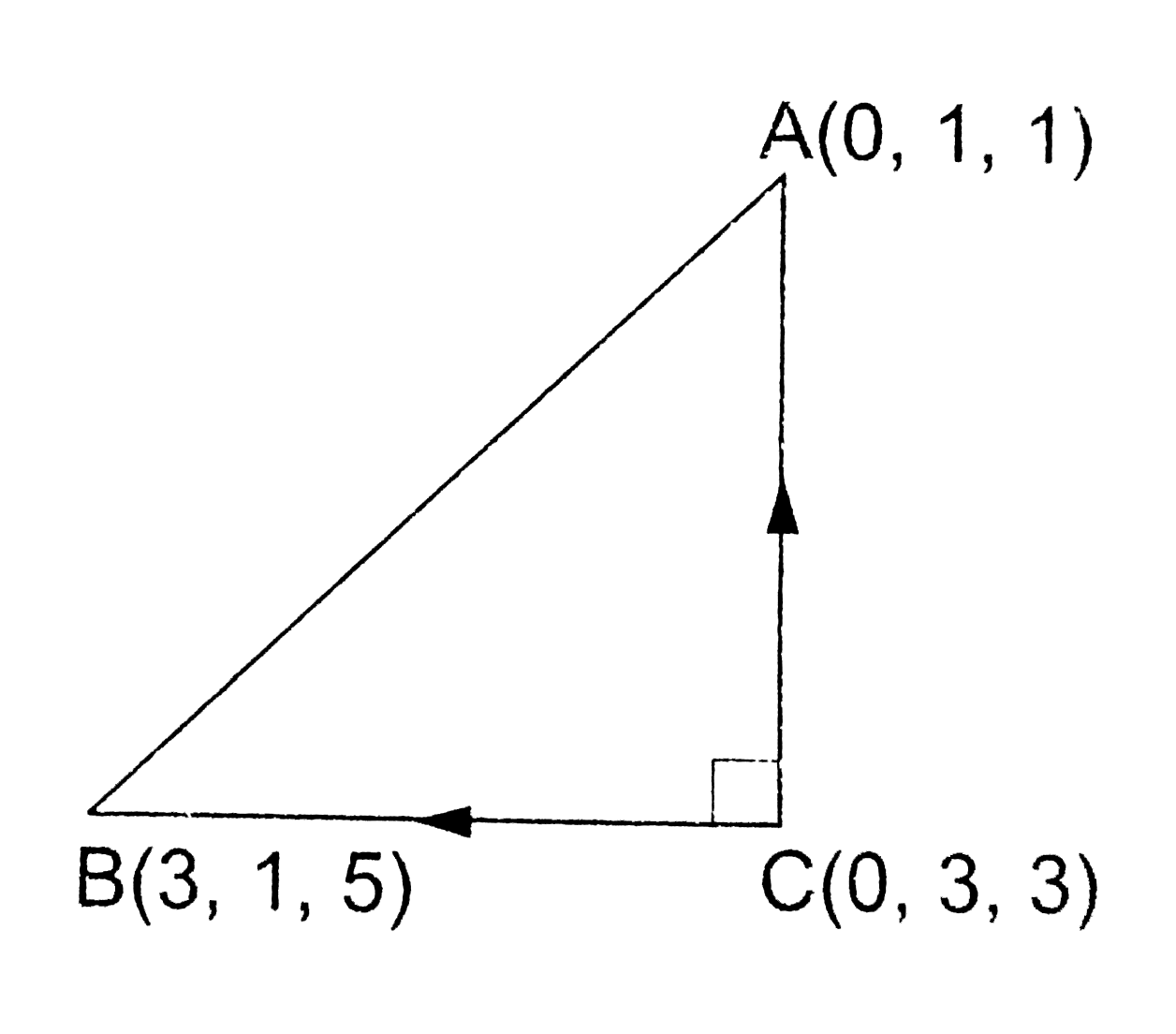Let A(0,1,1),B(3,1,5) and C(0,3,3) be the vertices of a △ABC. Using vectors, show that △ABC is right angled at C.
Video Solution
Text Solution
In order to show that −−→CA⊥−−→CB, we must show that −−→CA.−−→CB=0. Let O be the origin. Then,
−−→OA=0ˆi+ˆj+ˆk,−−→OB=3ˆi+ˆj+5ˆk and −−→OC=0ˆi+3ˆj+3ˆk.
∴−−→CA=(−−→OA−−−→OC)
=(0ˆi+ˆj+ˆk)−(0ˆi+3ˆj+3ˆk)
=(0−0)ˆi+(1−3)ˆj+(1−3)ˆk
=(0ˆi−2ˆj−2ˆk).
∴−−→CB=(−−→OB−−−→OC)
=(3ˆi+ˆj+5ˆk)−(0ˆi+3ˆj+3ˆk)
=(3ˆi−2ˆj+2ˆk).
∴−−→CA.−−→CB=(0ˆi−2ˆj−2ˆk).(3ˆi−2ˆj+2ˆk)
=[(0×3)+(−2)×(−2)+(−2)+(−2)×2]=0
⇒−−→CA⊥−−→CB.
Hence, ΔABC is right angled at C.

|
Updated on:21/07/2023
Topper's Solved these Questions
- BOOK - RS AGGARWALCHAPTER - SCALAR, OR DOT, PRODUCT OF VECTORSEXERCISE - Exercise 2334videos
SCALAR, OR DOT, PRODUCT OF VECTORS
- BOOK - RS AGGARWALCHAPTER - RELATIONSEXERCISE - Objective Questions22videos
RELATIONS
- BOOK - RS AGGARWALCHAPTER - SOME SPECIAL INTEGRALSEXERCISE - Exercise 14C26videos
SOME SPECIAL INTEGRALS
Similar Questions
Knowledge Check
- Question 1 - Select One
If A(3, 5, -4), B(-1, 1, 2) and C(-5, -5, -2) are the vertices of Δ ABC, then the triangle is
AscalaneBright angledCequilateralDisosceles - Question 2 - Select One
Let A(0,β),B(−2,0) and C(1,1) be the vertices of a triangle. Then
Angle A of the triangle ABC will be obtuse if β lies inA(−1,2)B(2,52)C(−1,23)∪(23,2)Dnone of these - Question 3 - Select One
If A(-1, 2, -3), B(5, 0, -6) and C(0, 4, -1) are the vertices of triangle ABC, then the direction ratios of the internal bisector of ∠BAC are
A(5, 6, 7)B(4, -3, 9)C(25, 8, 5)D(5, 8, 25)
Let A(5,−3),B(2,7)andC(−1,2) be the vertices of a △ABC. If P is a point inside the triangle ABC such that the triangle APC,APB and BPC have equal areas, then length of the line segment PB is:
View SolutionLet A(5,6), B(-2,3) and C(6,-1) be the vertices of ΔABC. Find the coordinates of the centroid of the triangle.
View SolutionIf A(−1, 3), B(1, −1) and C(5, 1) are the vertices of a triangle ABC , what is the length of the median through vertex A ?
View SolutionLet A(1, 1, 1), B(3, 7, 4) and C (-1, 3, 0) be three
points in a plane.
Area of the triangle ABC is (in sq. units)View SolutionLet the vertices of a triangle ABC be (4,4) , (3,5) , (-1,-1) , then the triangle is :
View Solution

